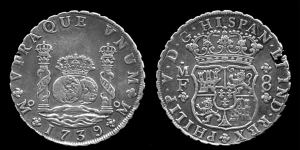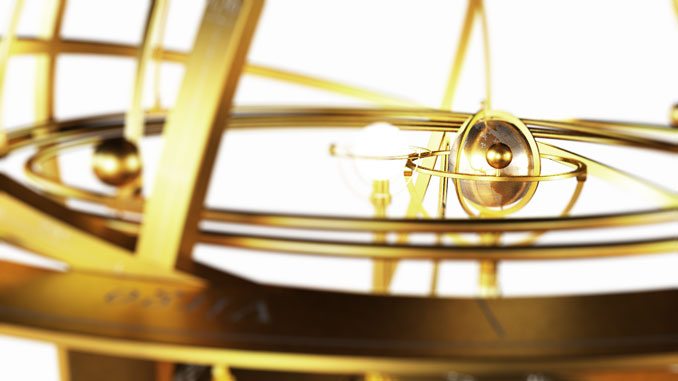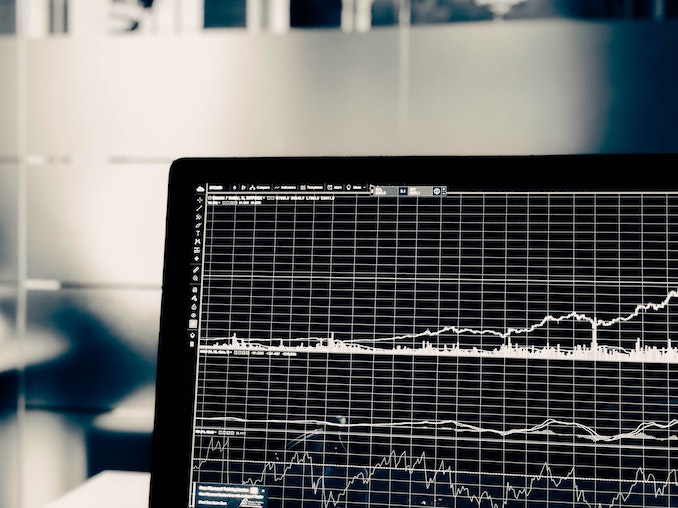By David Liechty
Gold and silver coin conforming to the Act of 1792 formed the basis of the US monetary system for over seventy years. Certain foreign coin, including Spanish dollars, was also allowed to circulate under the Act of April 10, 1806 (ch. 22, 2 Stat. 374). Fractional reserve banking based on reserves of this US and foreign coin developed rapidly during this time.
The Federal government incorporated the first Bank of the United States in 1791 (Act of 25 February 1791, 1 Stat. 191), and gave this private bank, in which the US held 20% ownership, a monopoly right to issue national bank notes up to $10 million over the “monies” held in reserve. The Act made these notes quasi-legal tender by accepting them as payment for any debt owed to the United States government. The number of state-chartered private banks increased rapidly, also, each issuing bank notes redeemable in coin.
The charter of the First Bank of the United States lapsed in 1811 and was not renewed by Congress.
The Federal Government made numerous issues of Treasury Notes during 1812-1816 to fund the War of 1812 and accepted private bank notes as payment. This encouraged vast over-issuance of private bank notes relative to reserves on hand, leading many banks to over-extend themselves. Rather than let these risk-taking banks collapse, state governments often allowed them to suspend payment in coin, transferring loss to those customers holding the notes.
In 1816, Congress incorporated the second Bank of the United States (Act of 10 April 1816, ch. 44, 3 Stat. 266), citing a need for a reliable source of lending in emergencies. The US again retained 20% ownership, gave the bank a monopoly right to issue national bank notes, and made these notes quasi-legal tender by accepting them as payment for any debt owed to the United States government. The Bank was also required to pay $1.5 million as consideration for the rights granted by the statue. As in the first Bank of the US, stock could be purchased using a mix of coin and debt instruments, but as a practical matter the ratio of debt to coin used to purchase stock in this bank exceeded that allowed by the statute.
The constitutionality of the second Bank of the United States was challenged in two primary cases. In McColloch v. Maryland (17 U.S. 4 Wheat. 316 (1819), the Court held that creation of a national bank was ”necessary and proper” (Article I, Section 8, clause 18) for Congress to effect movement of and access to federal money throughout the nation. In Osborn v. Bank of the United States (22 U.S. 9 Wheat. 738 (1824), the court held that a private corporation, even one owned in part by the Federal government, acts as a private corporation, and can undertake activities considered necessary to effect the purposes to which it was created, in this case banking services and emission of notes and bills, regardless of governmental ownership.
In 1832, four years prior to its lapse, Congress voted to renew the second Bank’s charter, but the act was vetoed by President Andrew Jackson. In 1836 the Treasury Secretary moved Federal deposits into a network of state and territorial banks meeting requirements set forward by Congress (Act of 23 June 1836, ch. 115, 5 Stat. 52v) as to reserve and redemption policies. In 1840, Congress began a system of “sub-Treasuries” dispersed throughout the nation which would hold Federal funds, thus dispensing with the use of private banks (Act of 4 July 1840, ch. 41, 5 Stat. 385).
The market value of silver dropped in relation to gold during this time, and in the Coinage Act of 1834 (Act of 28 June 1834, ch. 95, 4 Stat. 699) Congress reduced the amount of gold in the “eagle” to reflect this change, setting an effective statutory exchange rate of silver to gold at 16:1. Congress thus continued to recognize the standard “unit” of value in the US as the silver “dollar” set forward in the Coinage Act of 1792, modifying the amount of gold in the coin “having the value of” ten dollars. In the Coinage Act of 1837 (Act of 18 January 1837, ch. 3, 5 Stat.136), Congress altered the amount of alloy in gold and silver coins to be minted to 1/10 by weight, and expressly recognized all previously minted coin as continuing to be legal tender.
Privately issued bank notes continued to be the main media of exchange circulating in the US at this time, and some states took full or part ownership in these private banks. The constitutionality of these banks and the notes issued thereby challenged in Briscoe v. Bank of Kentucky (36 U.S. 11 Pet. 257 (1837), Woodruff v. Trapnall (51 U.S.10 How. 190 (1850) , and Darrington v. Bank of Alabama (54 U.S. 13 How. 12 (1851). The Supreme Court, however, held that these banks were private corporations, regardless of the extent of government ownership, and therefore the issued notes were not “bills of credit” under Article I, Section 10, Clause 1. These state-owned banks followed their counterparts’ pattern in over-issuing bank notes and suspending payment, often with direct legislative intervention to facilitate suspension where it had been specifically forbidden in legislation creating the banks.
In the Coinage Act of 1849 (Act of 3 March 1849, ch. 109, 9 Stat. 397) Congress introduced “gold dollars … of the value of one dollar, or unit”, thus applying the term “dollar” to a gold coin directly for the first time, though continuing to reflect the silver dollar as the fundamental unit of value (§1, 9 Stat. 397). The actual market exchange rate between silver and gold at this time was such that silver coin became scarce, and in the Coinage Act of 1853 (Act of 21 February 1853, ch. 79, 10 Stat. 160) Congress reduced the amount of silver in coins of half-dollar and lower denominations to 93.1% of their previous weight, but restricted their legal tender status to debts “not exceeding five dollars” (§2, 10 Stat. 160). In the Coinage Act of 1857 (Act of 21 February 1857, ch.56, 11 Stat. 163), Congress repealed all acts “authorizing the currency of foreign gold or silver coins,” thus eliminating the Spanish milled dollar from circulation for the first time, and limiting circulating coin in the US to that minted under the acts of 1792 and 1837 (§3, 11 Stat. at 163).
David Liechty is an attorney who is currently studying for a Phd in Constitution Studies. He is interning with Solari this summer.





Jerry.
Thank you.
Guy
You make some truly excellent points and if I may I would just like to add something to really fray ones nerves and that is the way in which the US Military went about evicting those poor unsuspecting people in the Bikini Atol when they wanted to test their nuclear devices. Watching the documentary and seeing the way in which the officers tried to explain to those indigeneous people what they were going to do was utterly appalling leaving me to think why didn’t they just show those poor people the video reels of their previous explosions. That would have done far more to explain what was about to happen to their land, homes and lives. Can you imagine their response? O the trusting nature of people is truly heartbreaking and if this doesn’t bring me to something I learned or came across some time ago about the way in which we should all approach life and that is with this interesting statement…
BELIEVE NOTHING
TRUST NO ONE
QUESTION EVERYTHING
Now of course the first two may not be very conducive to the faith of a Christian {of which I am} or for that matter a Jew and/or a Moslem for that matter but if ever we needed to start to question everything it is certainly us today! QUESTION EVERYTHING! Be of an objective mind and especially test the human character, for it is one of the if not the most important issues in the entire Bible. Everything has to be tested and proved because character is first and foremost the greatest of all matters concerning human existence.
Cheers
Jerry
http://www.xat.org/xat/moneyhistory.html
Hi David,
I came across this book from von Mises Institute by Murray Rothbard. A good half of the book is history of banking in the US and England as well as the problems arising from private bank notes. I found it interesting. I was wondering of your opinion of it.
http://mises.org/Books/mysteryofbanking.pdf
Thanks
Sher:
You can see how the G-8 acts in response to the requests of the G-192 – they are pretty much shut out entirely when it comes to formulating policy that effects global matters. It becomes obvious that there is a level of hierarchy that exists within so-called “world” bodies and that this is a holdover from the very powers that set up these world bodies. I am a firm believer that many of us have these very same indoctrinations of special-ness and elitism because of our upbringing in a culture that holds these claims to be the very basis for their “leadership” in the world. So where to root it out – I think it starts within and then expands outward.
I think that any way forward it is crucial not to recreate this very same way of thinking. I found an interview with Russell Means, the American Indian activist where he states that if anybody wants to see the methods Empire/New World Order or whatever you want to call it uses worldwide to maintain and expand its agenda – just look at the way American Indians are treated on the reservation. This is the place where they tested out a lot of their methods.
Aloha Guy, My family is up to their necks in precisely what you are speaking of. My husband is half Hawaiian. A dying breed. I’m from the Suquamish Tribe that lives around the waters of the Seattle area. Hawaii is one of the biggest military bases on the planet. Above ground and under sea. They’re still pillaging here.
Along with respect and trust, one must be “Pono”, which means to do what is right.
P.S. I just caught a snipet on the TV show “Cash Cab”. The question was: What land does the American government pay Cuba $2,000.00 in gold, a year, to rent? Ans: Guantanamo. I’m ready to start thinking in ounces. Can you tell me what the ounces are for $2,000.00? How do I start? Mahalo
Gold and silver was stolen from the indigenous people of the Americas to form the basis for the “legal tender.” We talk about fractional reserve banking being the evil, but really it is all based on the same. Stealing something from someone else, killing them off, taking the land and building something new in its place. Isn’t this what is spoken about all the time on this blog as what we don’t want to happen to us?
Any kind of better economic system that is worth fighting for has to based on mutual respect and trust of the sovereignty of others if we expect it in return. How do we take those steps to respect sovereignty and the rights of others in a better economic model? Empire makes it impossible for this to happen. How can we establish trade relations with others based on a symbiotic relationship?